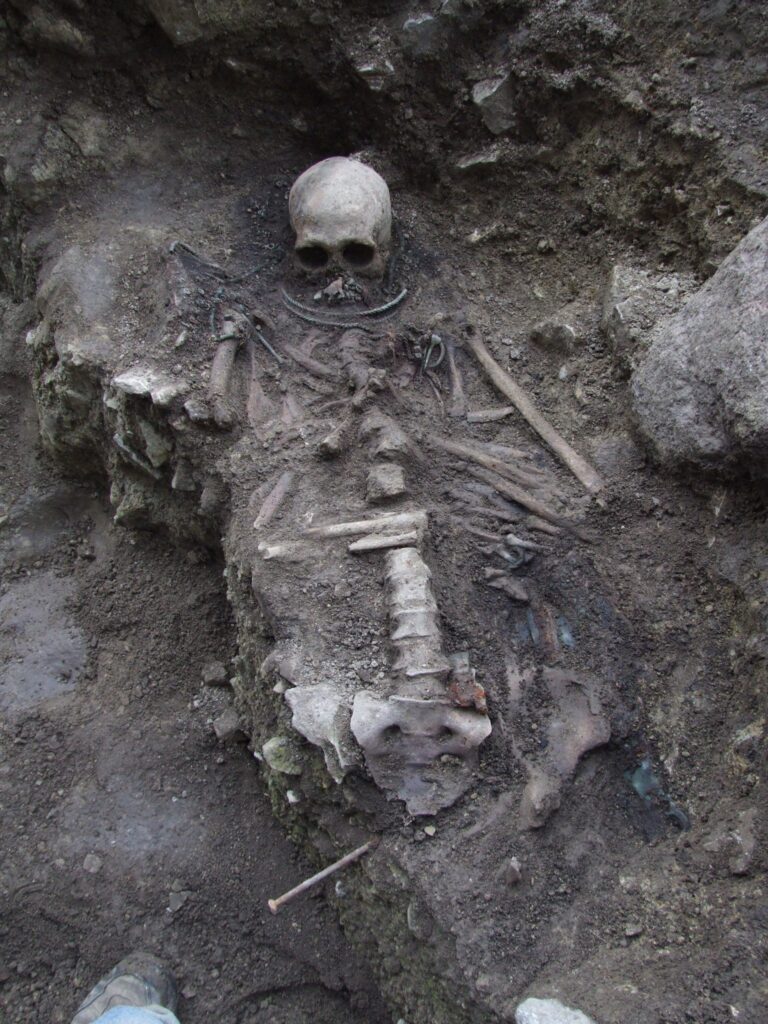The Valjala female burial no. IV, excavated in 2010 and where the remains of a possible shawl was found, is significant for several other reasons.
This burial belonged to a woman who had died between the ages of 40 and 50, and had been about 170 cm tall. Her left humerus had been broken at some time, but had fortunately healed. Her spine was slightly curved.
The woman had been buried with a very large number of objects, many of which had been placed under her back. She was wearing 12th century brooches, but the rest of the jewellery was exactly the same as that of the other burials, which date from the 13th century and rather mid-century. The manner of burial was also exactly the same as for 13th-14th century burials. In view of the woman’s age at the time of her death, it can therefore be said that she was probably buried with the headdresses fashionable at the time of her death, but also with the brooches worn in her youth.
As many as two 14C analyses of the grave showed that the woman had died either at the end of the 12th century or at the very beginning of the 13th century, and in any case before the official baptism of Saaremaa in 1227. Judging by the artefacts, then, quite soon after 1200. Judging by the location and the manner of burial, it is 99% probable that she was a Christian at the end of her life – people who converted to Christianity did not continue to bury in pagan cemeteries in the old way, but they did continue to bury in pre-existing Christian cemeteries. The possibility that the church of Valjala existed in some form as early as around 1200 can also be surmised from the archaeology carried out by the choir room of the church.
Next to the church in Valjala, household pits and other evidence of dwellings have also been discovered. Perhaps the first church in Valjala was a private church of a local noble, as they are known from the first centuries of Christianization all over Europe, and as can be assumed in Karja, Loona and Vira in Saaremaa. The woman was then probably one of the mistresses of the ancient manorhouse to which the private church belonged to.



